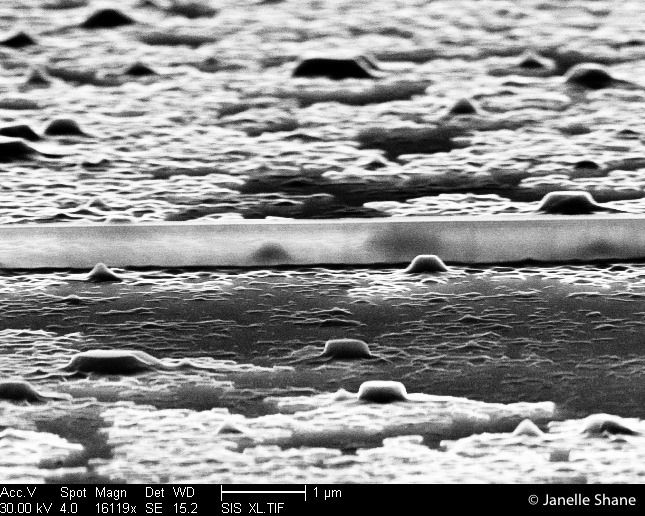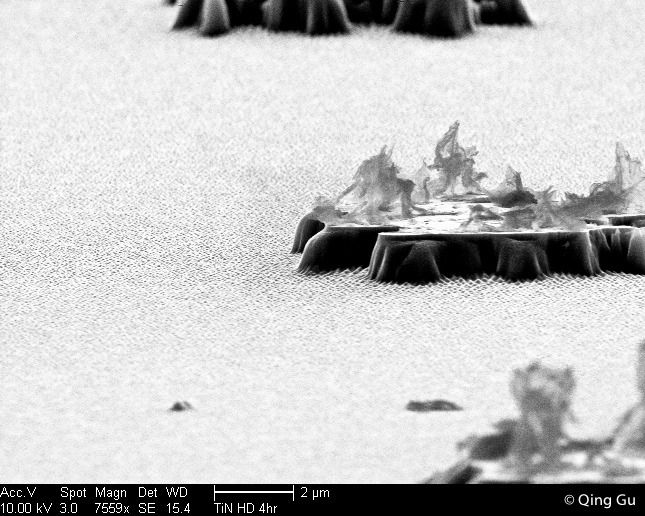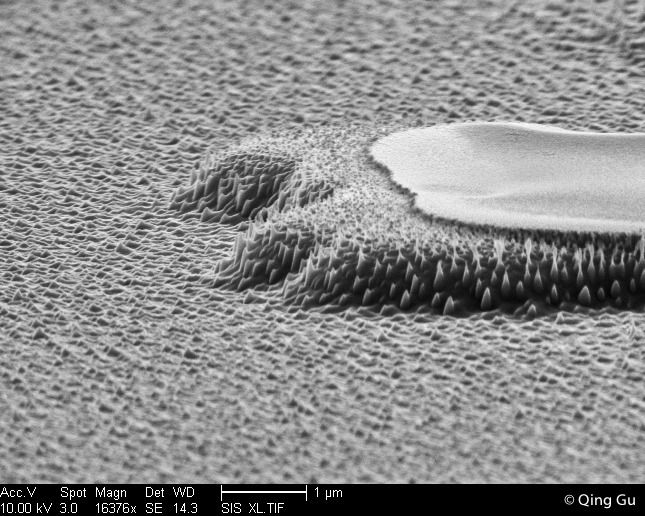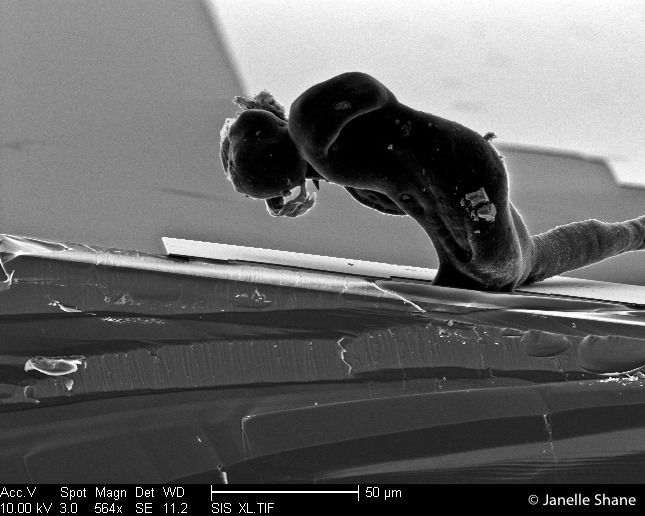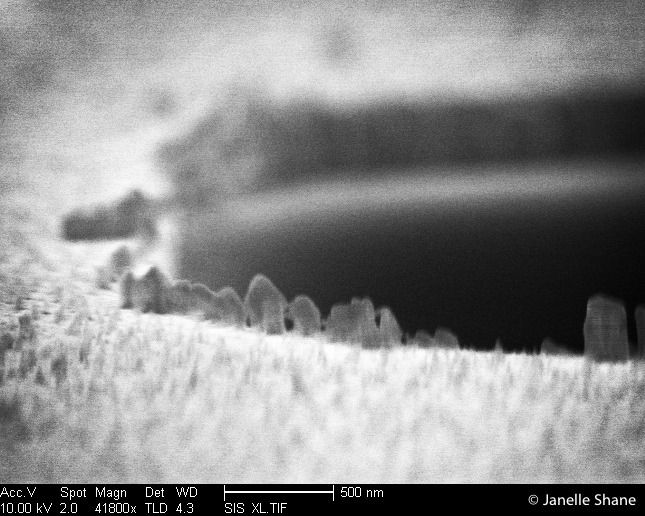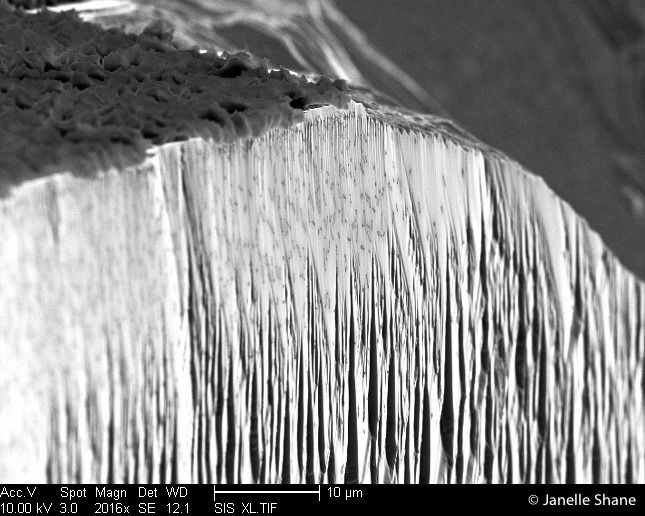The one on the left is a nanolaser, carved by high-energy plasma and strong
acid, and invisible to the naked eye. The one on the right is a hoodoo, carved
by wind and rain, and is approximately 20 million times larger. And about 60
million times older.
The reason they


